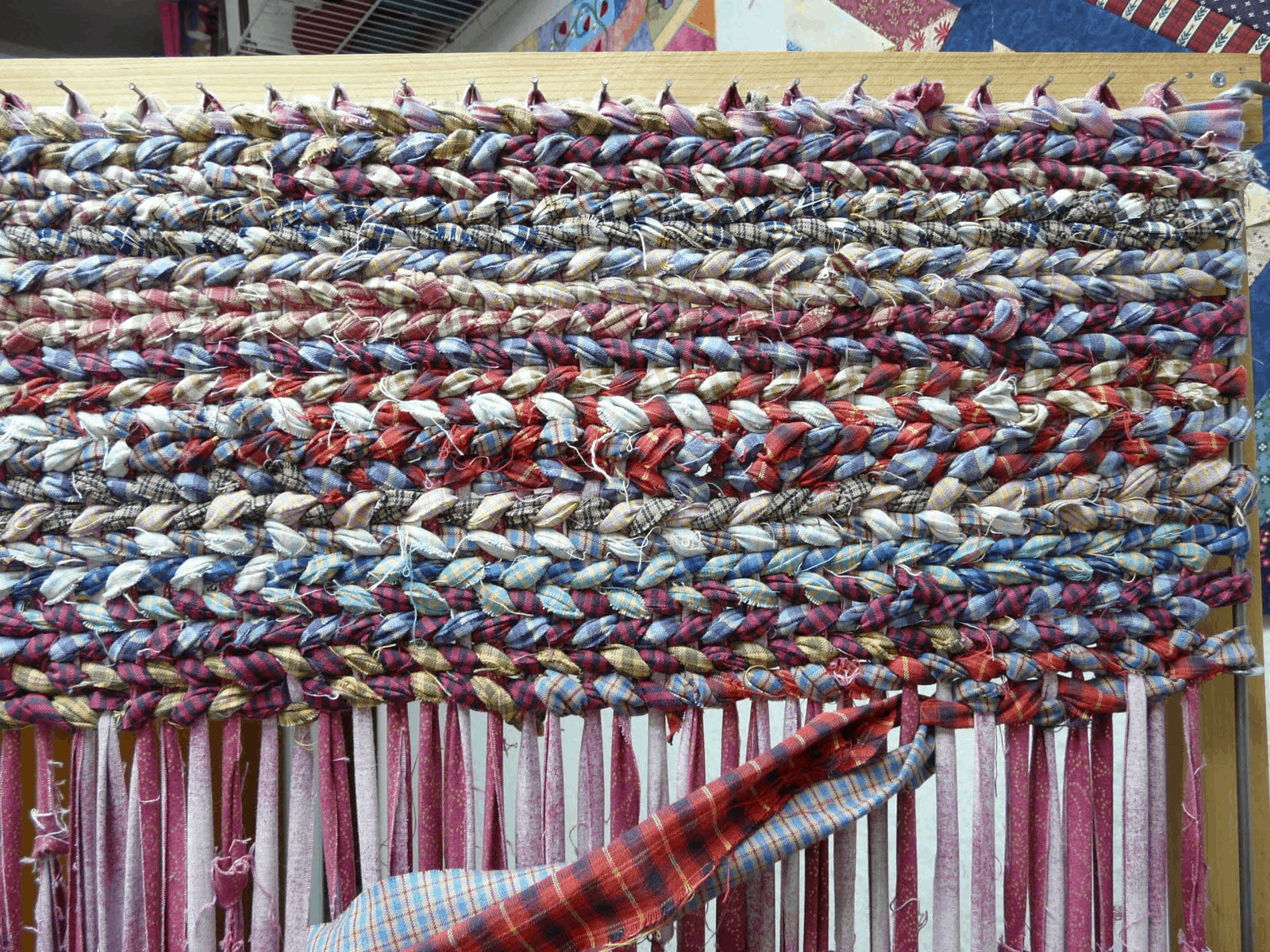

This quilt took about 6 queen sized flat sheets to complete.Īs the rug gets bigger you need to add more stitches. You can very easily hide these connections by rolling your fabric as you crochet and they disappear! It’s magic! The fact that the sheet is not perfectly straight because of the switch back in fabric does not affect the look of the rug at all. By doing this you will create one long strip which eliminates having to attach each strip together. Instead leave it attached about 1-2 cm and then rip the fabric back the other way.

When ripping a strip off of the sheet don’t rip it all the way off. I have used different methods of connecting the strips of fabric and I will share the one method that I find the most effective. When you use other types of sheets (other than flat sheets) there is just more preparation of the fabric to do before you start crocheting. I try to find queen or king sized flat sheets because they are the easiest to rip, however sometimes I use smaller sheets, fitted sheets or even duvet covers if I love the colour of the fabric. I bought these sheets from Value Village. Taking old objects and turning them into something new is very exciting to me! So when I came across rag rugs I was so inspired to create my own awesome Rag Rug too. The 7-step laundry system: Everyone should know about this. Washing machine settings: Here's what they really mean. Once they're made, all you do is toss them in the dryer with your wet clothes.Įditor's note: This article has been updated for clarity. All you need is two or three foil balls made with 3 or 4 square feet (0.28 to 0.39 square meter) of aluminum foil each, mashed into a ball that is around 2 to 3 inches (5.0 to 7.6 centimeters) in diameter. To take care of the static situation, make aluminum foil balls for your dryer. The acid in the vinegar can eat through the door seal. It creates noxious fumes.) FYI, don't use vinegar in front loading washers. Your clothes will feel softer and look brighter without any irritating chemicals. To replace fabric softener, add a quarter-cup of baking soda or a half-cup of white vinegar to the wash during the rinse cycle. There are some simple and cost-effective alternatives. You don't have to give up softness and static-free clothes. Luckily, dryer sheets are useful for many other things:

Eventually, you'll find that lint is hard to remove because the sticky film has blocked the holes in the filter and adhered to some of the lint. The residue from the fabric softener sheet builds up on the filter, load after load. This typically isn't a problem, except when it comes to the dryer's lint filter. Unfortunately, the film from the dryer sheet also coats your entire dryer. In the dryer, the stearic acid melts from the heat, coating the clothes to make them soft and reduce static. Why dryer sheets are a bad ideaĭryer sheets are woven sheets of fibers coated with stearic acid or fatty acids, scents and a cocktail of various chemicals. Here's why you should rethink your washing and drying routine. The problem is, they're not that great for your clothing, towels or dryer. Smells and feels after you use fabric softener or dryer sheets.


 0 kommentar(er)
0 kommentar(er)
